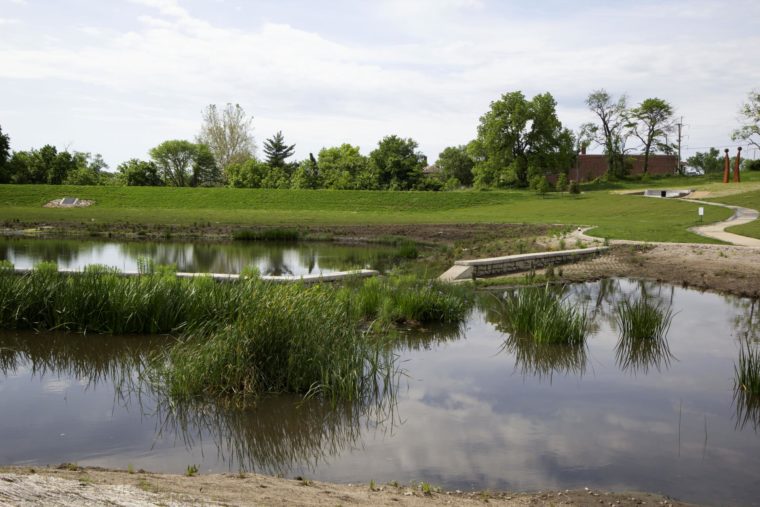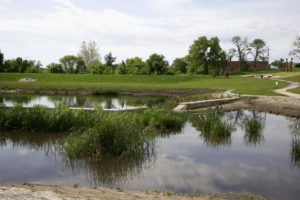
Green infrastructure is a construction trend worth watching. It is gaining momentum rapidly and support for the trend is evident at every level of government.
There’s a noticeable difference in green construction projects. These types of initiatives encourage, or mandate, specific components, standards, and results. For instance, a green infrastructure project may be designed to result in replenishing groundwater, sustaining trees and plants, or protecting ecosystems. A green construction project may focus on the objective of providing sustainability and resilience or enhancing safety by using certain types of materials.
The enthusiasm for green construction has led to new organizations such as the Coastal Resilience Interagency Working Group – an organization that aggressively works to protect threatened coastlines. In water projects, green construction components might include nature-based solutions such as widened floodplains, expanded wetlands and/or the development of water-retaining basins. Outcomes such as improved water quality, mitigation of flood risk, reduction of urban heat islands, and/or sustainability could be the goal. Some of the green infrastructure projects will have equity components built into the design plan.
Federal agencies with specific guidelines for green infrastructure include the Federal Emergency Management Agency (FEMA), the Army Corps of Engineers, and the Environmental Protection Agency (EPA). These, and other federal agencies, have agency-specific rules for implementing green infrastructure projects. Other agencies and other federal programs will likely follow the same patterns.
The emphasis on green infrastructure is obvious at the state level in Texas and green construction projects are becoming the cornerstone of the Texas Water Development Board’s long-term plan for providing future water resources for the state’s historic growth. The agency is encouraging localized adoption of green infrastructure and awarding funding and recognition for successful green construction projects.
Last year, the city of Houston, Texas began to support green infrastructure construction projects by providing tax abatements for private developers meeting green construction goals and standards. Since then, the city has delivered 40 green stormwater projects with green construction. The Brazos Street reconstruction project is just one example of how city leaders plan to redesign roadway projects to include infrastructure enhancements. This $14 million project will launch in 2023. Contractors interested in pursuing the opportunity should know that, according to the city’s green development guidelines, the project will seek components such as LED street lighting, cool pavement materials, native vegetation, and rain gardens capable of treating and capturing roughly one-third of the stormwater that pools in the street’s right of way. These guidelines will also apply to the city’s park projects that will be launched soon.
City leaders in Fort Wayne, Indiana are advancing a road extension project that will comply with the city’s green infrastructure guidelines. The project has an estimated cost between $15 million and $20 million. It will feature the green infrastructure elements of natural drainage improvements, LED lighting, new stormwater basins, and enhanced landscaping. The extended roadway will also connect to a new roundabout designed to reduce congestion. Planning documents indicate that the road extension project will take place over two phases with a completion date in 2025.
In September, city officials in Hoboken, New Jersey revealed preliminary plans to expand a local recreational park. The Southwest Resiliency Park expansion project is set for design work following the city’s $11 million acquisition of an adjoining 1-acre parcel of land. Officials plan to incorporate green infrastructure components into the project. These features will focus on diverting and storing significant amounts of stormwater to alleviate strain on local sewer infrastructure. The park project will also include a series of rain gardens, bioswales, and an underground water detention system capable of storing 180,000 gallons. The cost forecast for the project is approximately $10 million and construction is slated for 2023.
A large flood mitigation project planned for Kansas City will also mandate green infrastructure components. The city’s water utility has invested $3.2 million in the preliminary design phase and the project could cost somewhere between $40 million and $50 million. The green infrastructure enhancements will improve a heavily trafficked intersection that is vulnerable to flooding. The objective is to use green construction techniques to absorb, collect, treat, and reuse stormwater runoff.
County officials in San Mateo, California hope to have a design plan finalized in December 2022 along with a projected cost for a new flood park. This will be a green infrastructure project that focuses on urban forestry, flood basins, rain gardens, and other features that protect trees and vegetation.
Green construction is a strong trend, and it will impact future construction projects significantly. Hundreds of green infrastructure projects have funding and are in the final phase of design. Demand for companies equipped to provide green infrastructure construction requirements will be very high.

